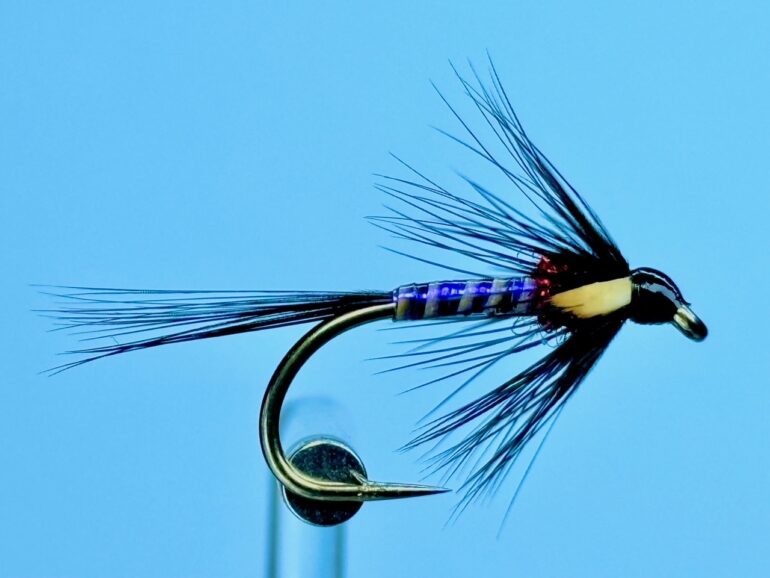
A Fly to Tie & Try April by Les Lockey April 2025
Fly of the Month – April by Les Lockey
The UV Quilled Black Cruncher (Nymph)
Hook: Kamasan B175, size10 – 12, or similar.
Thread: Black Semperfli Nanosilk, 50 Denier, or any fine black thread.
Tail: Black cock hackle fibres.
Abdomen: Stripped natural peacock eye quill with UTC Blue Ice tinsel over.
Thorax: Red Lite Brite and dyed black peacock herl.
Hackle: Black hen hackle.
Cheeks: Split jungle cock nail feather.
TYING
Photo 1. Start the thread behind the eye and wind on an even bed of thread stopping just past the hook point and remove the thread tag.
Photo 2. For the tail, align the tips of a small bunch of black cock hackle fibres, remove them from the feather stem and tie them in about the same length as the hook shank using two turns of waxed thread wound towards the bend. Trim the waste ends to the same length as the abdomen.
Photo 3. In similar fashion, tie in a length UV Ice Blue tinsel using two thread wraps wound towards the bend. Follow this by tying in the tapered end of a stripped natural peacock eye quill. Trim the waste ends to the same length as the abdomen and then bind down all the loose ends with touching turns of thread, stopping at the thorax.
Photo 4. Wind the peacock eye quill up the shank leaving a small space between each turn allowing the black thread to show through. Secure with thread at the thorax and trim off the excess quill. Now lightly coat the abdomen with superglue and wind the Ice Blue tinsel in slightly overlapping turns over the glue and tie it down at the thorax, before removing the excess tinsel.
Photo 5. Dub a small amount of red Lite Brite onto the thread and wind it on to form the rear part of the thorax.
Photo 6. Tie in two strands of dyed black peacock herl and wind them on to form the front part of the thorax. Secure with thread and remove the excess herl.
Photo 7. Hold the tip of a black hen hackle in a pair of hackle pliers and stoke all the remaining fibres back to expose the tip. Remove the hackle pliers and trim off the hackle tip leaving a small triangular stub. Wax the thread and tie in hen hackle by the short triangular stub and once secure, wind on 2 or 3 turns of hackle. Secure the hackle in place with thread and remove excess hackle.
Photo 8. Tie in a small split jungle cock nail feather so it sits equally either side of the thorax. Bring the thread to the eye, fold the jungle cock feather stem back and tie it down forming a neat head as you go. Keeping the thread tight, carefully wiggle the feather stem to break off the waste feather.
Photo 9. Whip finish, remove the thread and varnish the head to complete the fly.
Tying tips
- A flat tying thread will help to produce a smooth underbody on which to wind the quill. Keep the waste ends of the tail fibres, quill, and tinsel the same length as the abdomen as this will avoid lumps and bumps in the underbody.
- The fibres for the tail are best aligned while still attached to the feather stem – simply stroke the fibres away from the stem until the tips line up, then hold the fibre tips tight and pull them away from the stem.
- Remember to wax your thread when tying in the materials as this will allow you to limit the number of thread turns used and produce a neat head.
- For a belt and braces approach, the completed abdomen can be coated with UV resin, but to be honest, if the Ice Blue tinsel is wound over a thin coating of superglue, then the abdomen is robust enough without the use of resin.
- Keep the dubbed rear section of the thorax small so there is enough room for the peacock herl, hackle and jungle cock eyes. You can however use some Velcro to pull out a few of the Lite Brite fibres before tying in the peacock herl but rub any straggly fibres between finger and thumb to encourage them rearward.
- To strengthen the peacock herl thorax take a couple of thread turns through it.
- I find it easier to isolate the hackle tip and trim it to a short stub about 2mm long which can then be used for tying in the feather. Alternatively, tie in the isolated feather tip with a couple of thread wraps then fold the tip back and secure it with more turns of thread before cutting away the excess tip.
- If split jungle cock nail feathers are not available, use goose biots of an appropriate colour.
Fishing hints
- Crunchers can be fished at any time of year, with the darker coloured versions working best early and late season. They are perhaps at their best when fished as a team of three, on a floating line, but they can be equally effective when fished in conjunction with other small nymphs such as diawl bachs and buzzers, on a floating, sink tip or intermediate line, depending upon the prevailing conditions.
- When more depth is required, I fish the cruncher on the dropper of a two fly cast with a small gold head damsel on the point.
- Crunchers are an excellent dropper option when fishing the washing line which allows them to be fished slowly across the wind.
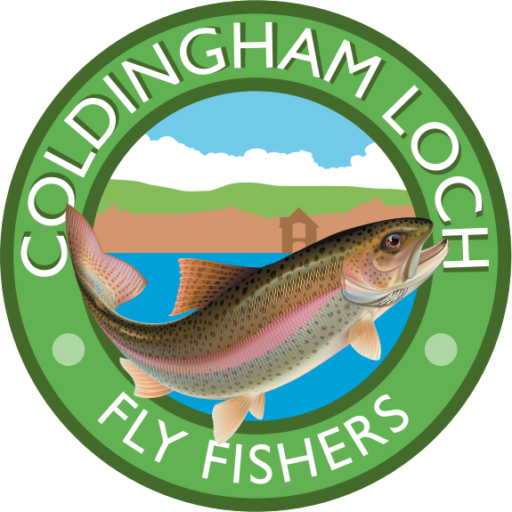



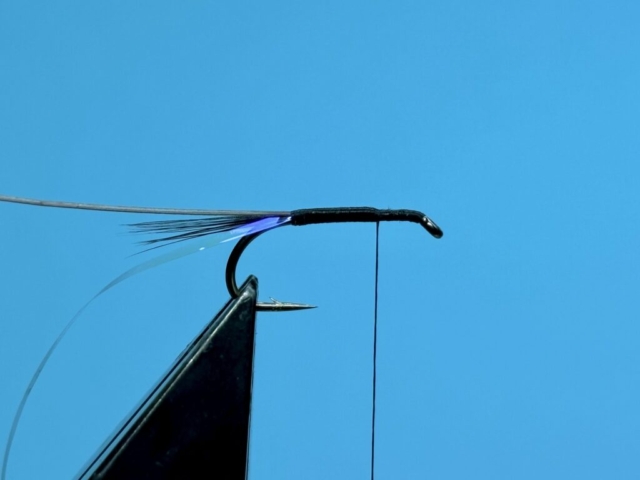

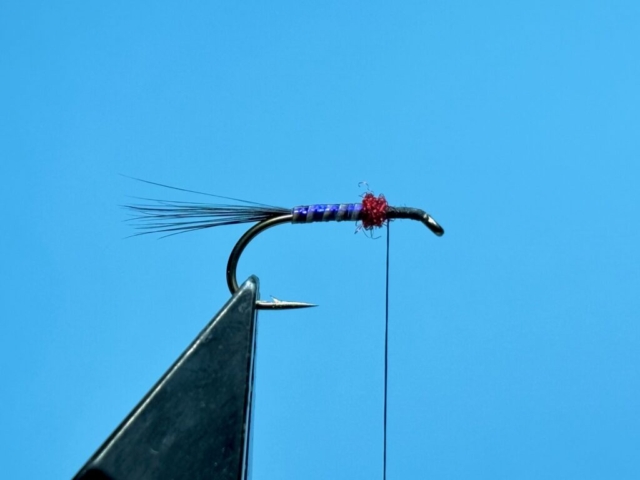
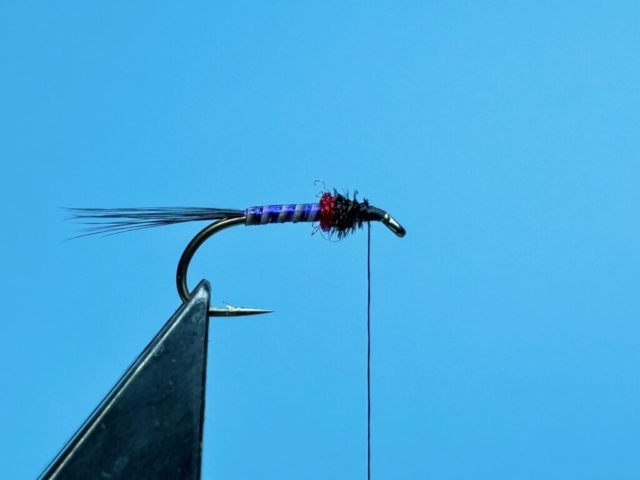
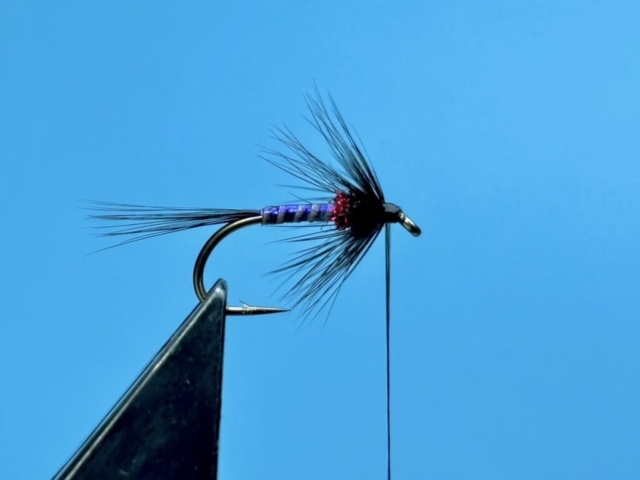
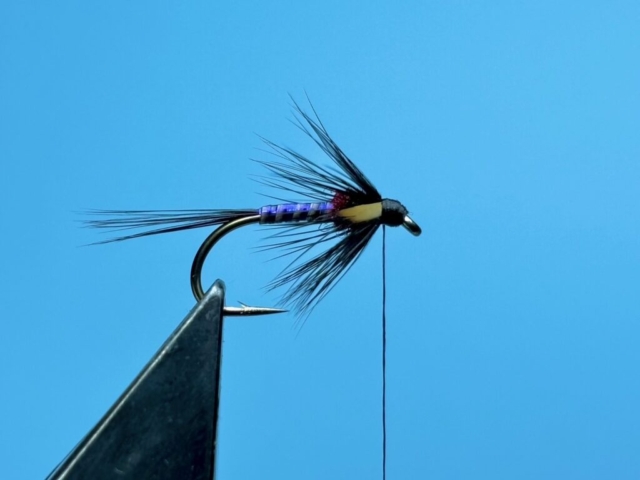
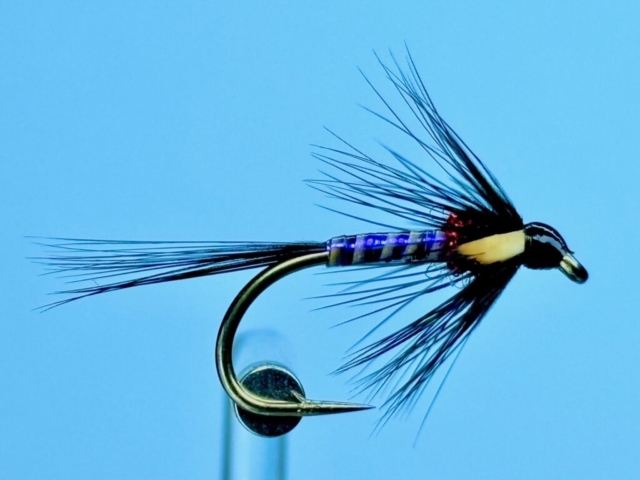

Recent Comments